- Heart & Soil Newsletter
- Posts
- Week 7: Focus on the soil, the foundation
Week 7: Focus on the soil, the foundation
Grow good soil to grow good food.
Hi! I'm Jo, writing from Heart & Soil homestead, a 1-acre homestead in the Far South of Cape Town, South Africa. Every week I share inspiration and education for your growing journey. Thanks so much for reading!
Welcome to Ten Things from Ten Years on our homestead, where I’ll be reflecting on major tipping points framing our time on the farm. This is week 7, where I reflect on soil life, and how much small improvements have compounded.
The soil is the great connector of lives, the source and destination of all
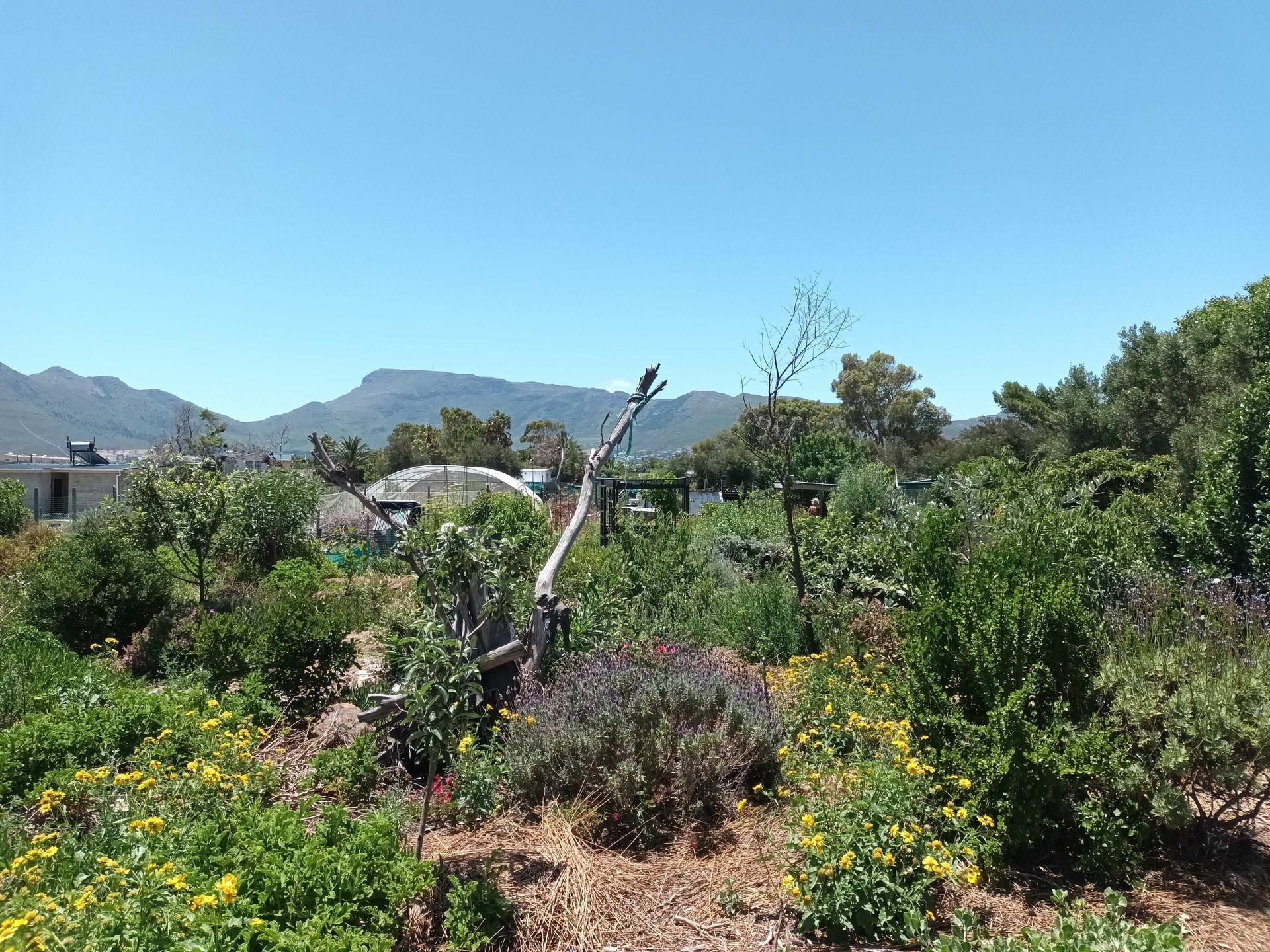
Consistently adding organic matter and covering our soil has been once of the most important keys to growth. Still, our soil reverts to sand incredibly quickly.
The nation that destroys its soil destroys itself.
Focus on the soil, the foundation of all growth
Have a plan for soil building.
In our area, we were growing on beach sand. I'd add compost, and within three months, it would completely disappear. I learned that digging in compost separated the particles from one another - microbes would eat the organic matter in each little space, then die because they couldn't get enough moisture or food to multiply or connect with their friends. Adding tons of compost slowly improved the soil, but the volume required felt prohibitive and Sisyphean.
Looking back, several things would have saved me energy:
Start small and ripple outward. When we began, I focused on large swaths of property, expending energy to collect horse manure for the edges of our farm where I'd plant a lonely tree. It would have been much more effective to focus on a narrow band very close to the house and gradually expand.
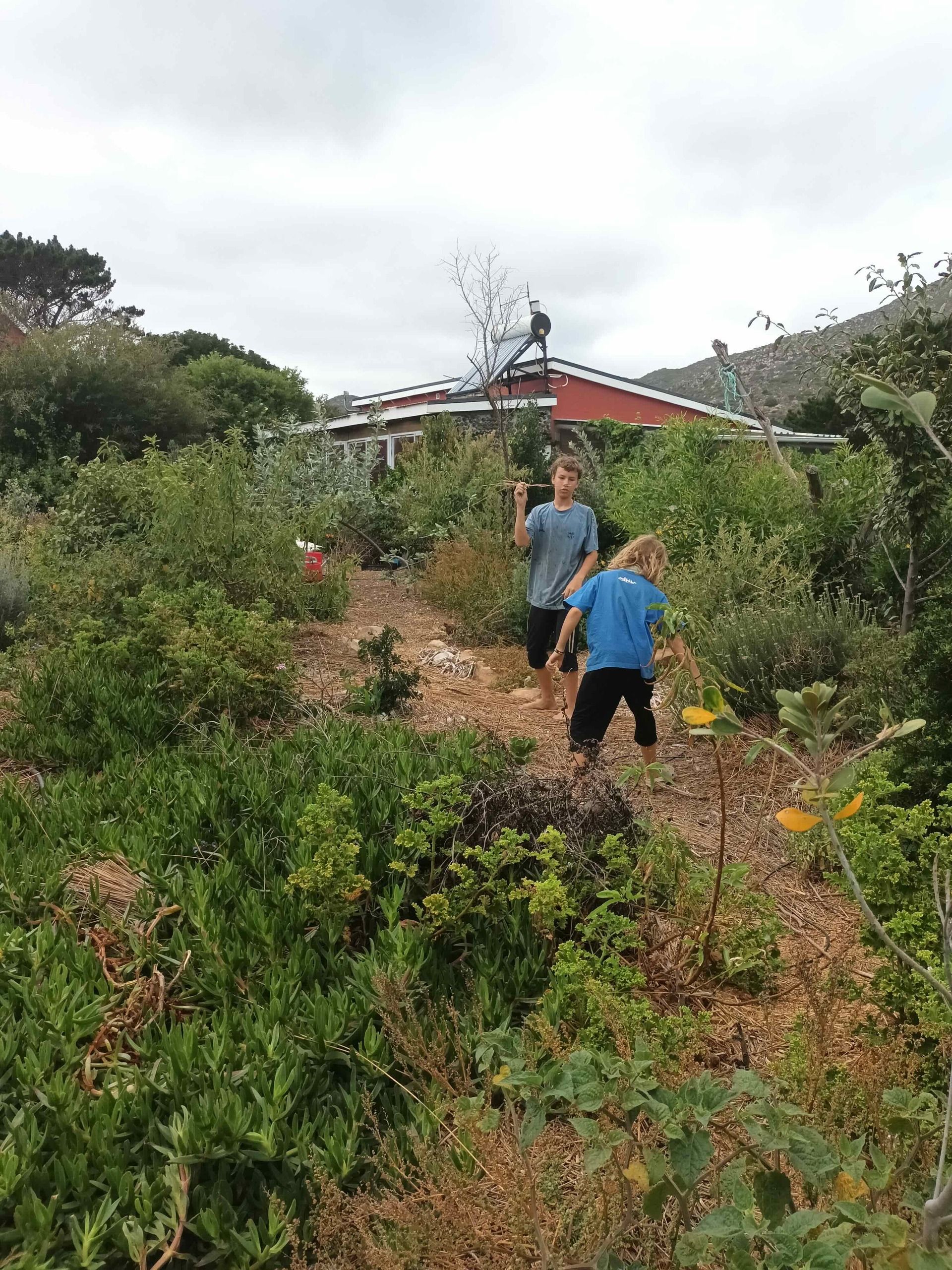
Our thatch is a great mulch, and also very aerodynamic for throwing at one another…
Layer deeply. Applying 10cm of compost followed by 10cm of mulch would have created more lasting change. However, in our area, Cape dune mole rats are a significant factor. Even with compost layers, when mole rats took plants and trees, the area returned to sand because they effectively turned the soil, isolating the compost and starting the process over.
Turning points and positive approaches:
I used hugelbeds (branches piled into berms and covered with soil and compost), which allowed some growth since mole rats couldn't dig through wood. Though ineffective long-term, this gave me a snapshot of what no-dig gardening could look like. All nutrients - organic matter, branches, landscaping waste from a large gated community - stayed on site. Slowly, this created pockets of organic matter that lasted long enough to shade and enrich portions of soil.
I learned the soil had to be built from the top down. Dense surface applications of compost led to organic growth, which stabilised the soil and allowed for more growth.
Given the mole rat impact, I had to design beds that would exclude them long-term. This inspired our cement block beds, which many of you have emulated. Galvanized mesh at the bottom prevents mole rats from taking the top 10cm of roots and allows consistent soil improvement. We created welded mesh baskets to shield new fruit tree roots and help trees establish.
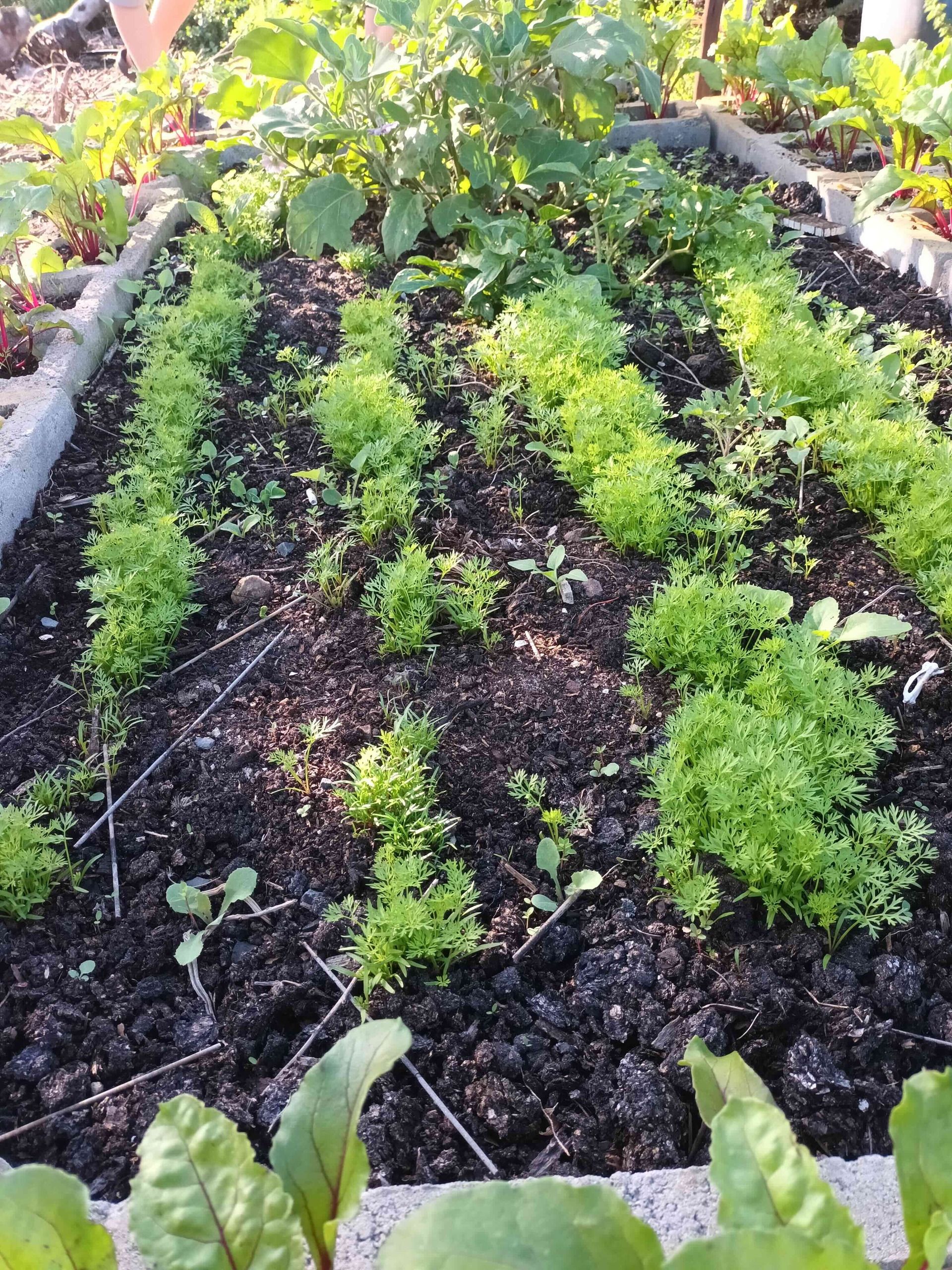
The soil still isn't stable. Even now, if sand is exposed to light and air, the sandy area spreads and few things grow. Until soil is fully, consistently utilised and covered, it requires mulch, planting, and care.
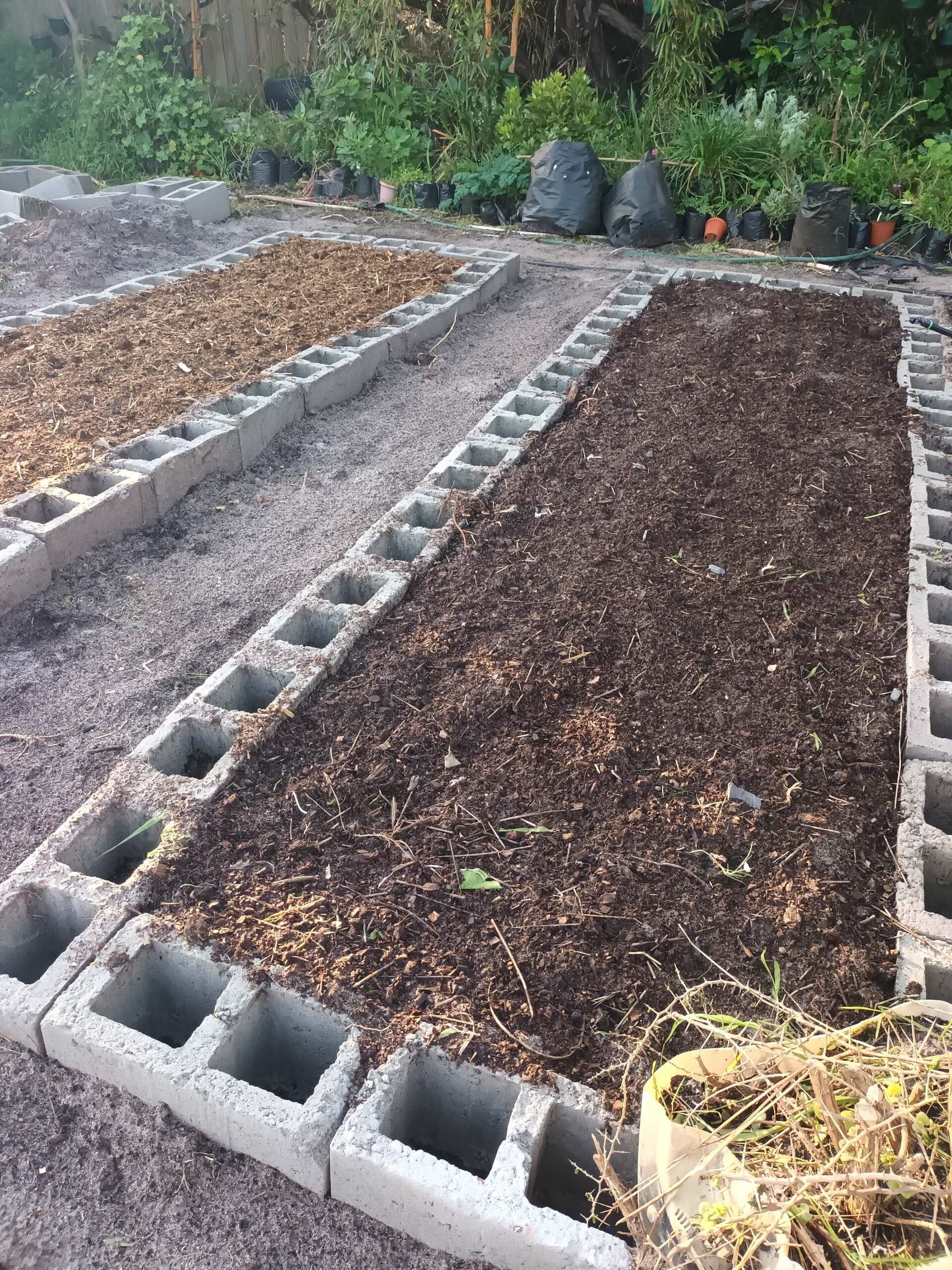
This year’s new beds- we still need to cover the rows, fill the blocks, and protect the beds. After ten years, we will finally have fully utilised our space with about 53 beds, poly-tunnel, food forest, and animal pastures (some integrated, some separated)
If you're in an urban area, getting organic matter is a small exercise in courage. Start asking around, build your sources, and be reliable and easy to deal with. Pick up when you say you will. Be available for drop-offs.
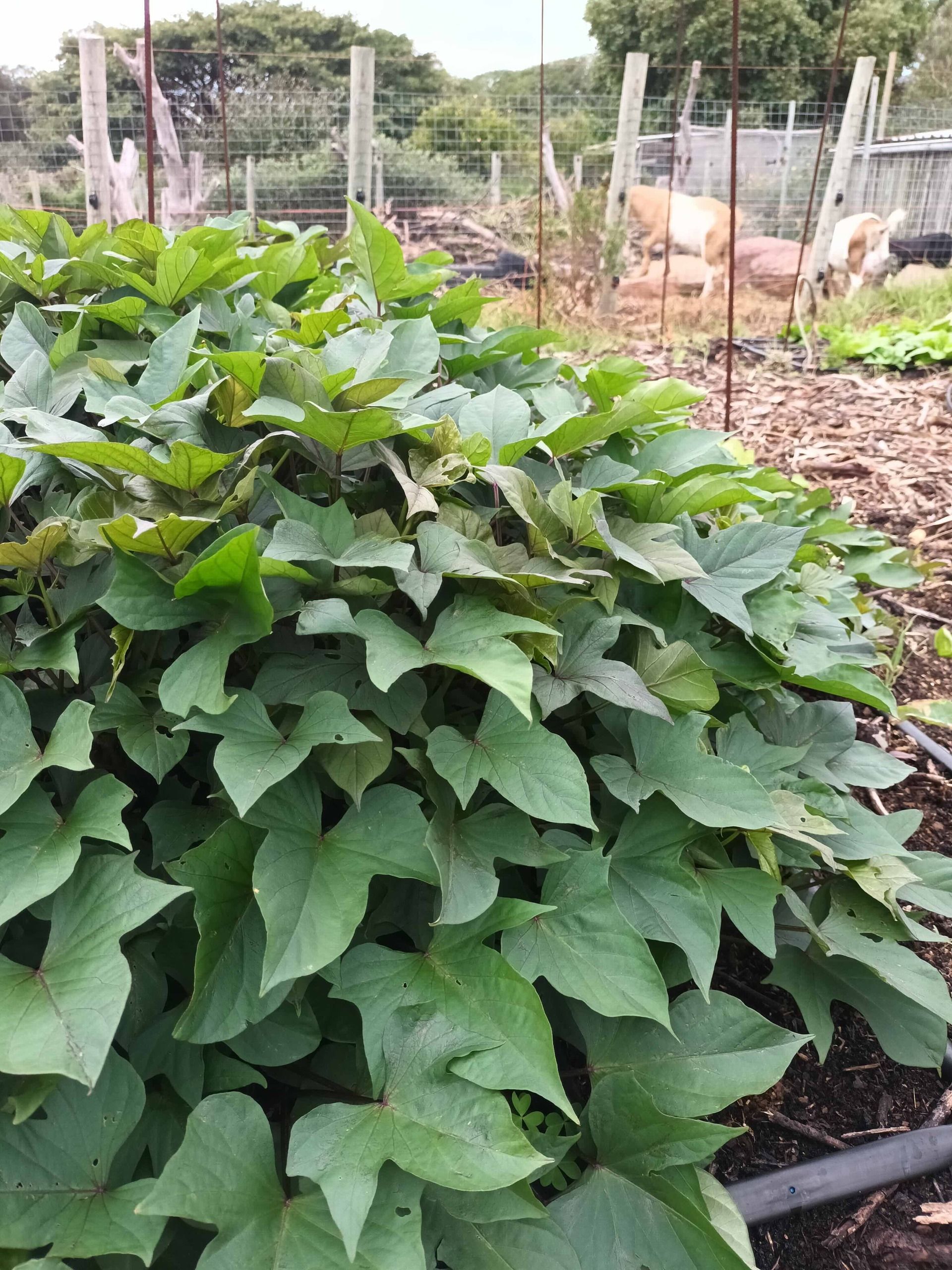
a good view of our soil coverage with mulch and plants.
Workshops
2 Aug 9-10:30 Veg growing workshop I’m slowing down a little on topic-related workshops for this year, as we plan our NPO and how to share our learning and systems more broadly. If you have a company group or a group of family or friends that you’d like to learn composting, growing, chicken rearing, sourdough baking, cheesemaking or some other topic, let me know. It could be a fun way to connect with colleagues, friends and family. |
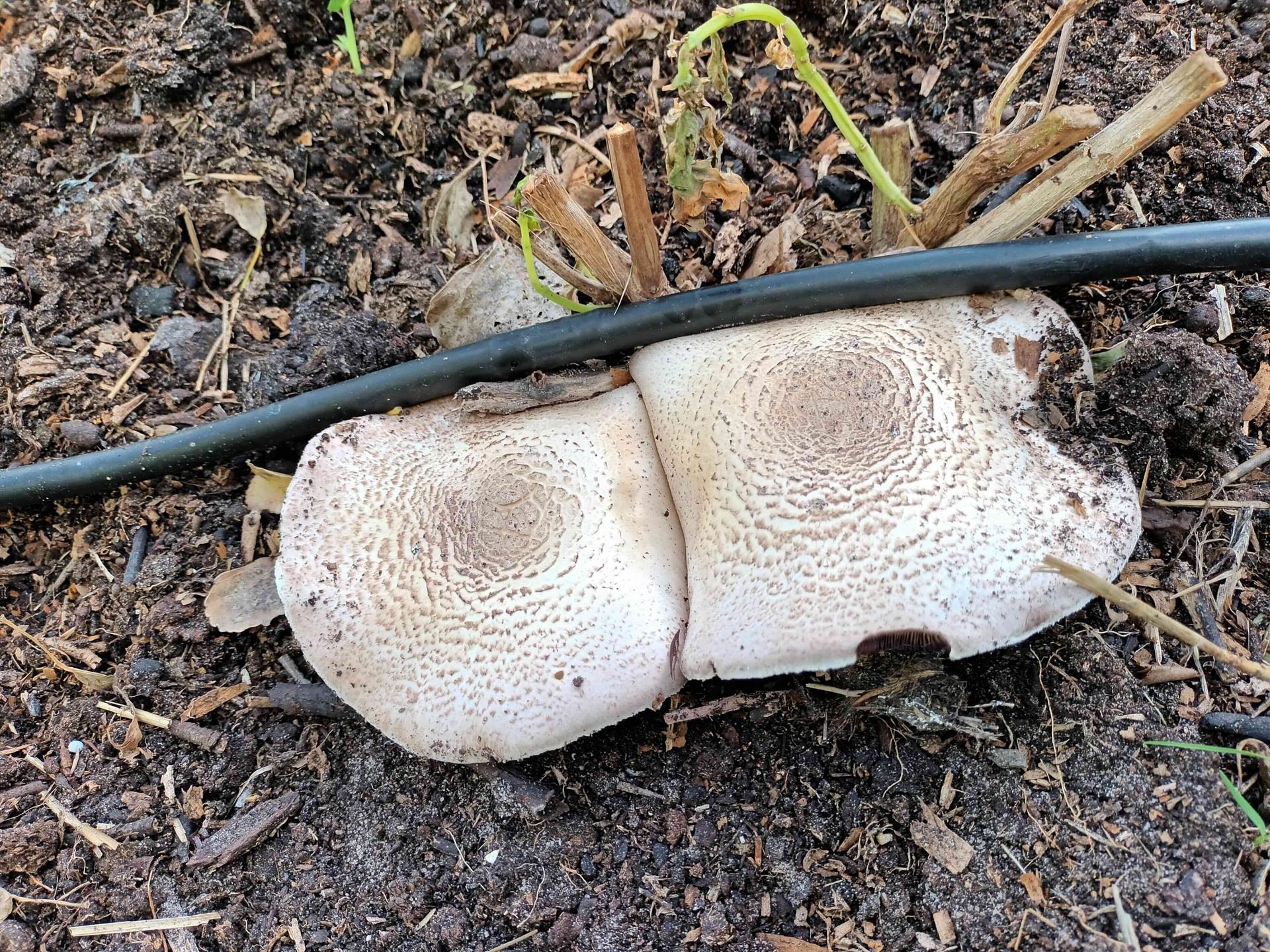
Agaricus subrufescens, or almond mushroom, is a sign our soil is a happy place for both mycelium and bactera (as almond mushrooms need both)
If you are enjoying our newsletter, consider forwarding on to someone in your community. If you received this from a friend, you can sign up here

Reply